Battling Bloomington’s botanical bullies: MC-IRIS ramps up fight against invasives
Frequent Weed Wrangle events are one way that the nonprofit MC-IRIS is working to fight invasive species. Upcoming parks department Weed Wrangles are scheduled for Crestmont Park, Latimer Woods, Griffy Lake, and Bloomington Rail Trail, among others.
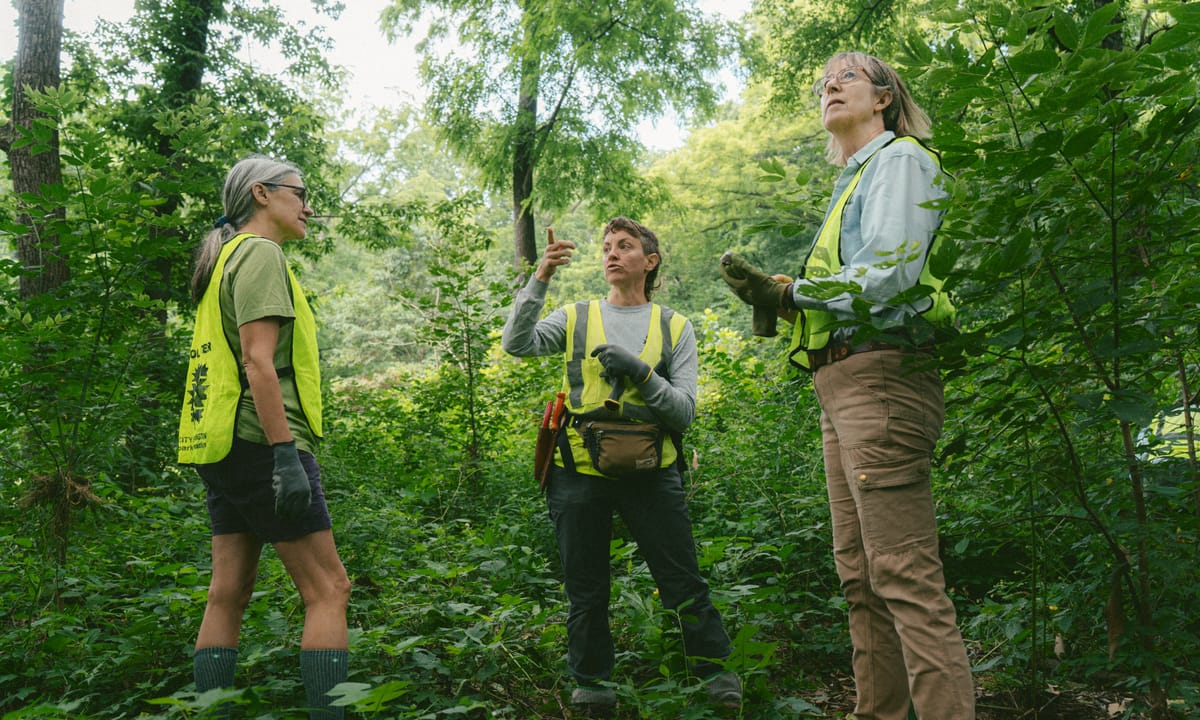
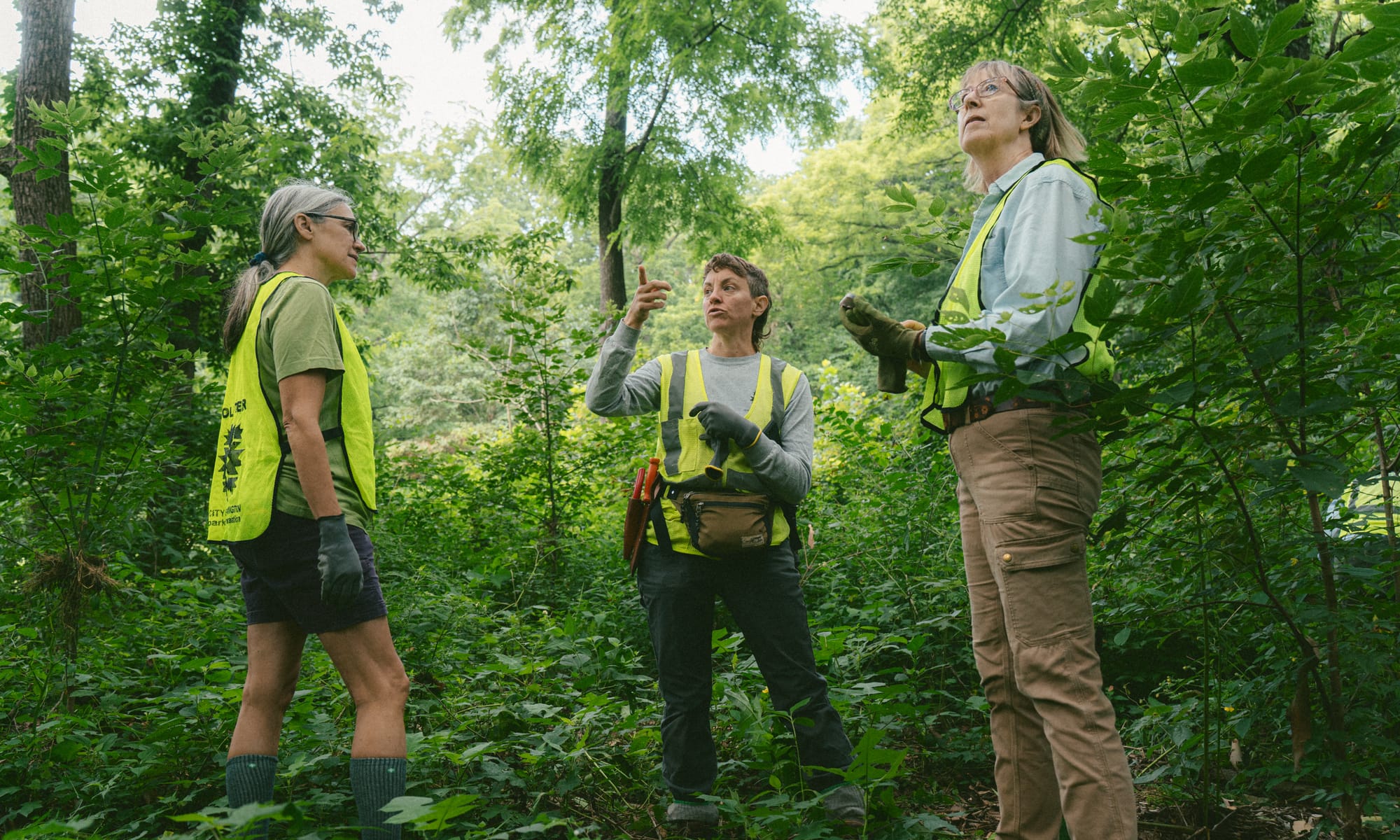
Thanks to the gradual spread of certain invasive plant species, parts of Bloomington and Monroe County have gotten a little out of whack over the years. Even if you can’t identify garlic mustard or purple wintercreeper, you’ve probably seen both of these botanical bad actors thickly carpeting the understory of our forests.
Of course, the Bloomington area is not the only place with problem plants like multiflora rose, autumn olive, and Callery pear. Ecosystems around the world are increasingly out of balance as non-native species take hold in new locales. As these exotic plants thrive, they displace native plants which have evolved alongside the native insects, birds, and other animals that they naturally support.
Whether it’s a grove of Callery pears or a stand of Asian bush honeysuckle, invasive plants have at least one thing in common. “The invasive species end up bullying out the native plants, and we lose the plant diversity and then that leads to a loss in animal diversity,” Ellen Jacquart says. She is president of Monroe County-Identify and Reduce Invasive Species (MC-IRIS).
The nonprofit’s mission is to reduce the impact of invasive plants by helping to clear them out, so that different kinds of native plants can become established—or re-established. For the last several years, MC-IRIS members, along with a growing contingent of volunteer “weed wranglers,” have been doing that, armed with pruners, loppers, and weed wrenches. They periodically descend on areas in need of special attention. MC-IRIS partnered with several groups to hold more than 360 Weed Wrangle restoration events just last year.
The photos published with this article were taken at an early August event hosted by Bloomington’s parks department in Lower Cascades Park.
“The City Parks and Recreation is one of our biggest partners, and we work closely with them to help put on Weed Wrangles,” Jacquart says. “Their program of Weed Wrangles has grown and grown over the last few years, so that now they’re having Weed Wrangles almost every day of the year. It’s making a huge difference.”
Upcoming parks department Weed Wrangles are scheduled for Crestmont Park, Latimer Woods, Griffy Lake, and Bloomington Rail Trail, among others.
The mission of MC-IRIS includes education, so that people can address invasives on their own property. To that end, MC-IRIS offers information and demonstrations on common invasive plants and their removal. They also provide specialized tool kits for invasive plant control which people can borrow for up to two weeks at a time. Kits contain pruners, loppers, a folding saw, a soil knife and sheath, a weed wrench, and a bag of herbicide application supplies.
MC-IRIS makes house calls, too. “We give free invasive surveys to anybody in the county who wants one,” Jacquart says. “We’ll come out, evaluate your yard, tell you what’s invasive, tell you what’s native, and give advice on how to control the invasives.”
Free invasive plant surveys are available from April through October. “We’ve done hundreds of those now, and the more we went to people’s yards, the more we realized, ‘Oh, for heaven’s sake, they have invasive species in their landscaping and they’re taking care of them!’” Jacquart recalls. “So, we started being very clear with people: ‘You should really get rid of invasives that are in your landscaping.’”
“Virtually all of the invasive species that we are chasing … came from [introduced] landscaping,” says Jacquart.
Providing native alternatives to popular invasive landscaping plants is one way MC-IRIS sweetens the pot. “This year, if you controlled a Callery pear, Japanese barberry, or burning bush and uploaded a picture of the stump, we would give you a free native shrub or tree to replace what you cut down,” she says.
The group also holds an annual native plant sale at the Switchyard Park maintenance building located at 1601 S. Rogers St. This year’s event will take place on Saturday, September 6 from 9 a.m. to 1 p.m. Shoppers will find nearly 100 different kinds of perennial native plants, shrubs, and trees for a variety of growing conditions. Some of the available perennials include blue vervain, aromatic aster, downy skullcap, cup plant, swamp rose mallow, common milkweed, and wild ginger, as well as many prairie grasses and sedges.
Unlike invasive weeds, trees can’t be just yanked out by hand. Plant sale proceeds go in part to fund grants which help defray the cost of invasive tree removal. Most recently, MC-IRIS focused on Callery pear, tree of heaven, and white mulberry—three invasive trees which readily spread. “We have a grant program where, if you take down an invasive tree—because trees are more costly to take down—we’ll reimburse up to $400 of your cost,” Jacquart says.
For its part, Bloomington’s parks department recently rolled out a program to help homeowners who meet income qualifications with the cost of tree work in general—not just invasive trees. It’s meant to help pay for the cost of “high-risk tree removal, tree hazard mitigation, and tree planting.” But Bloomington’s urban forester Haskell Smith confirmed to the B Square the connection to non-native nuisances: “Invasive tree removal could be a part of that as both the Callery pear and tree of heaven pose their own level of risk due to having poor characteristics, structure, and weak storm resilience.”
Callery pears are particularly widespread because, decades ago, they were the go-to tree for landscape architects; however, they eventually became invasive. Smith estimates that he removes about 100 of the trees from Bloomington’s tree inventory each year.
Photos: Aug. 2, 2025 Weed Wrangle at Lower Cascades Park

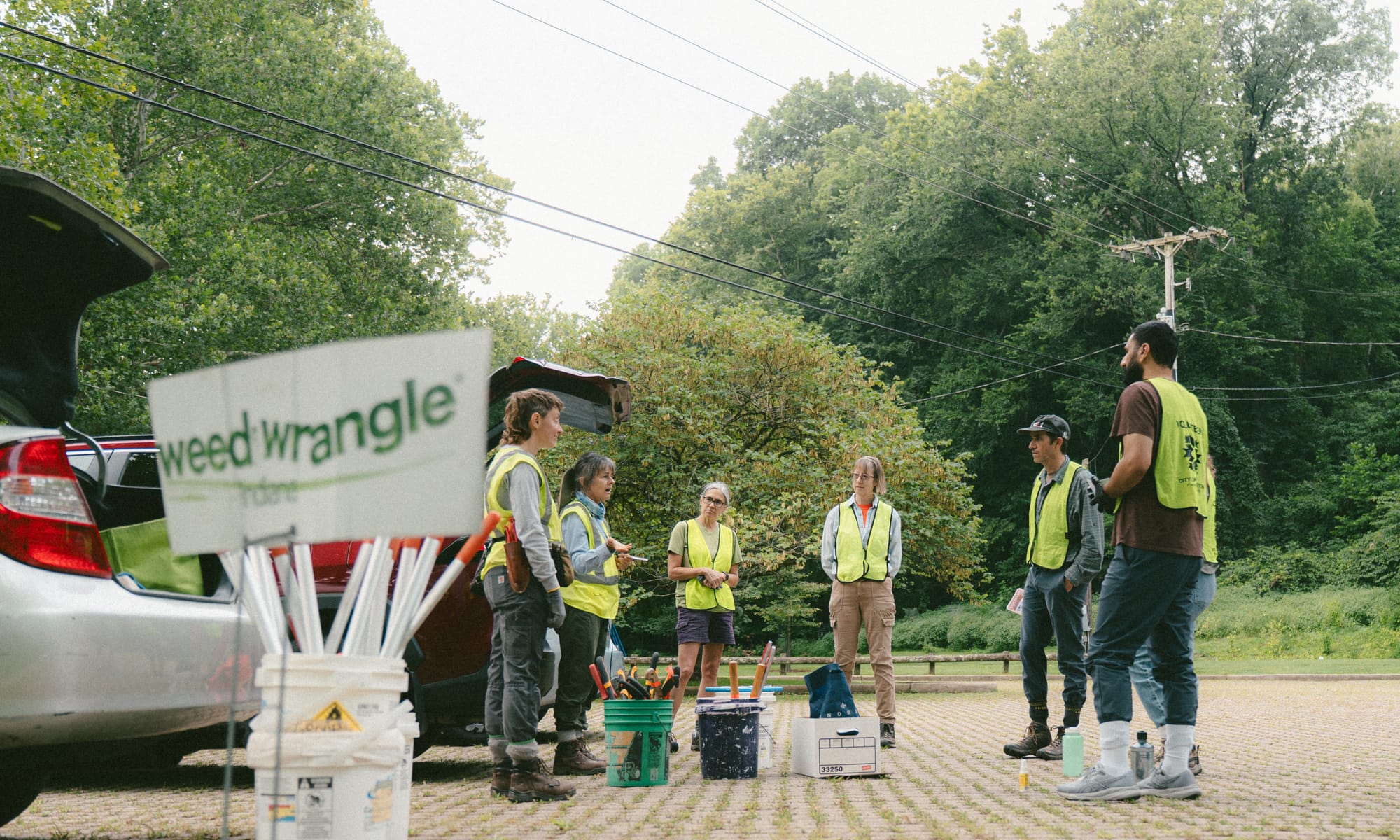
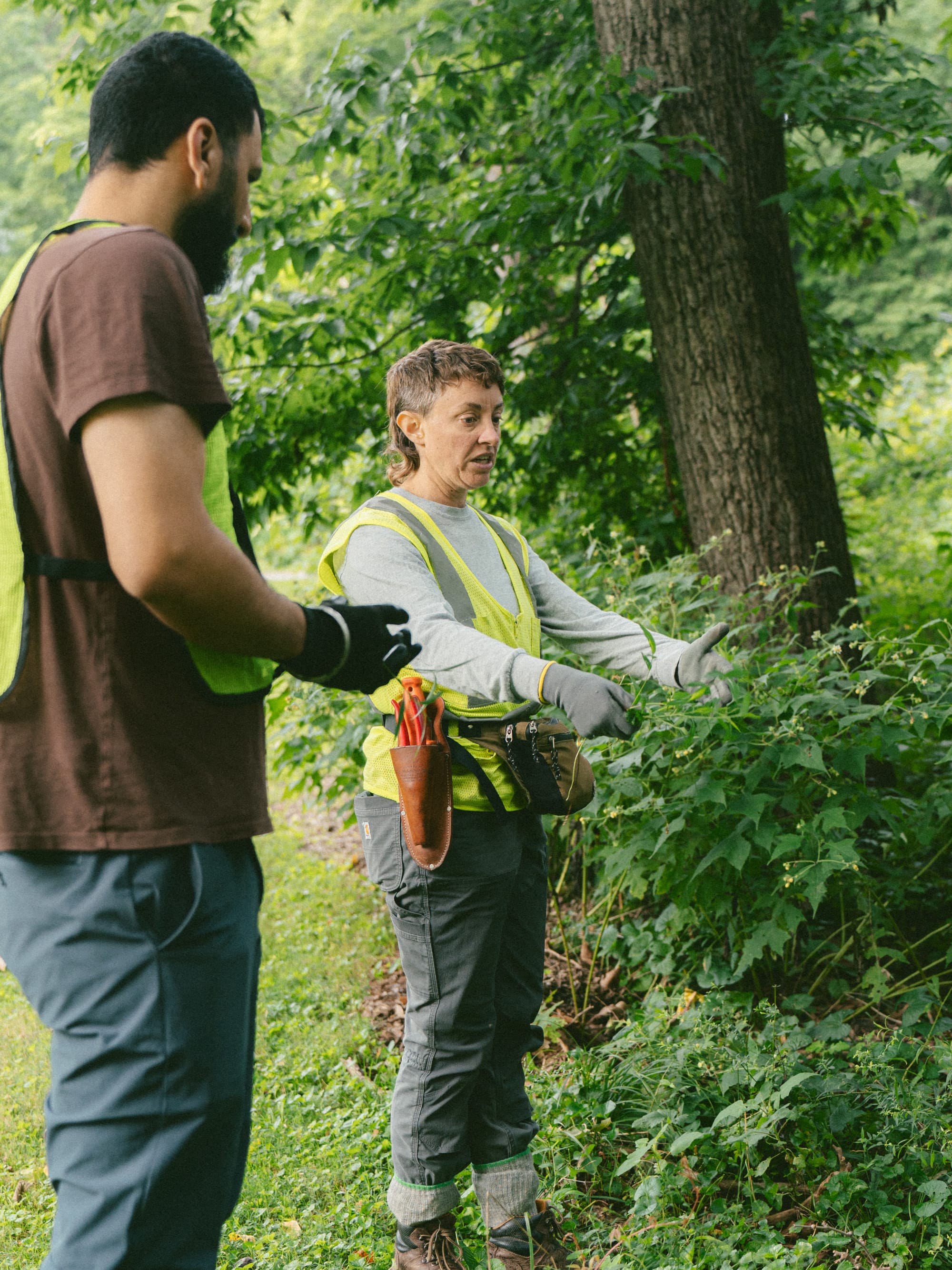
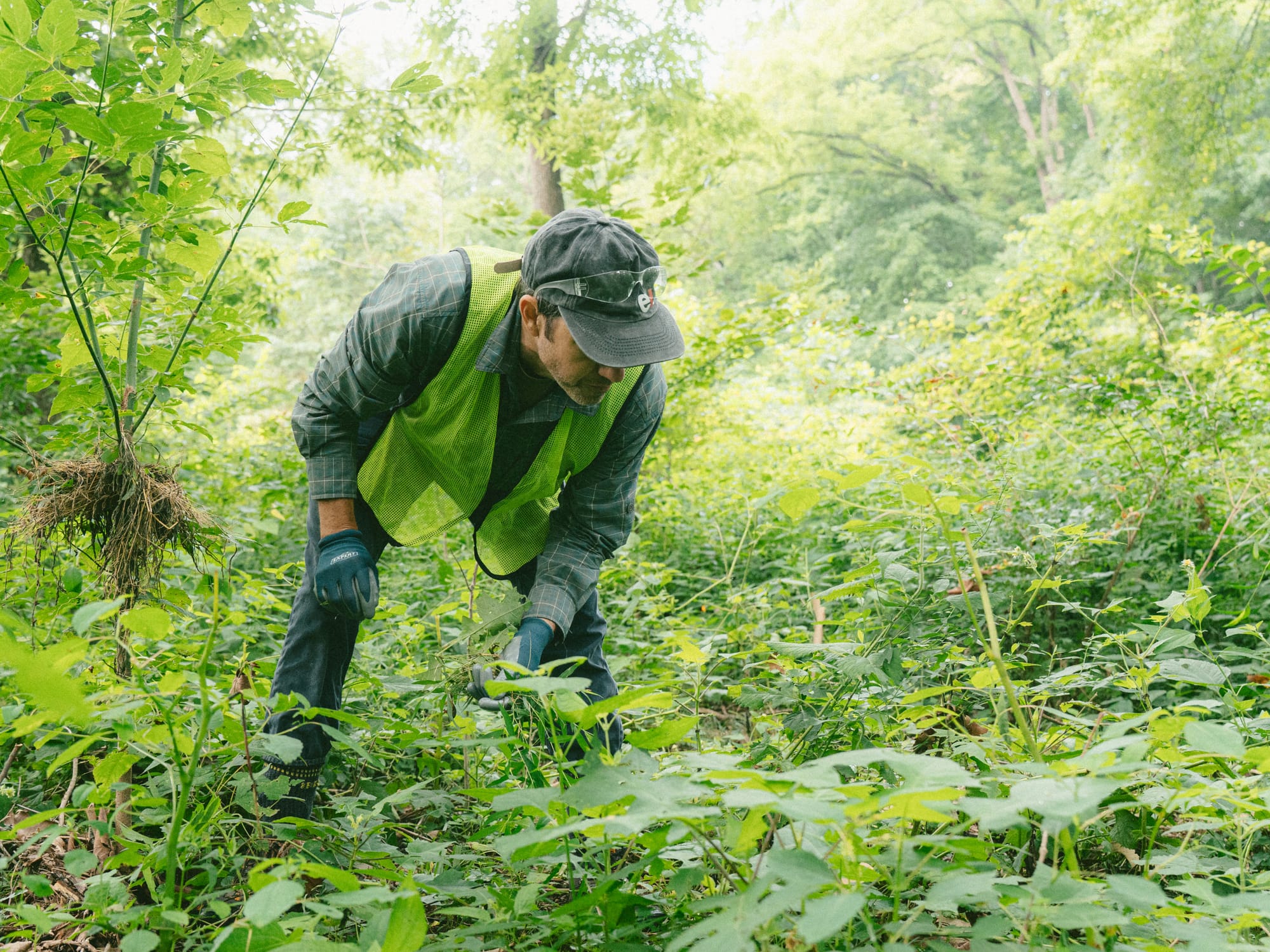
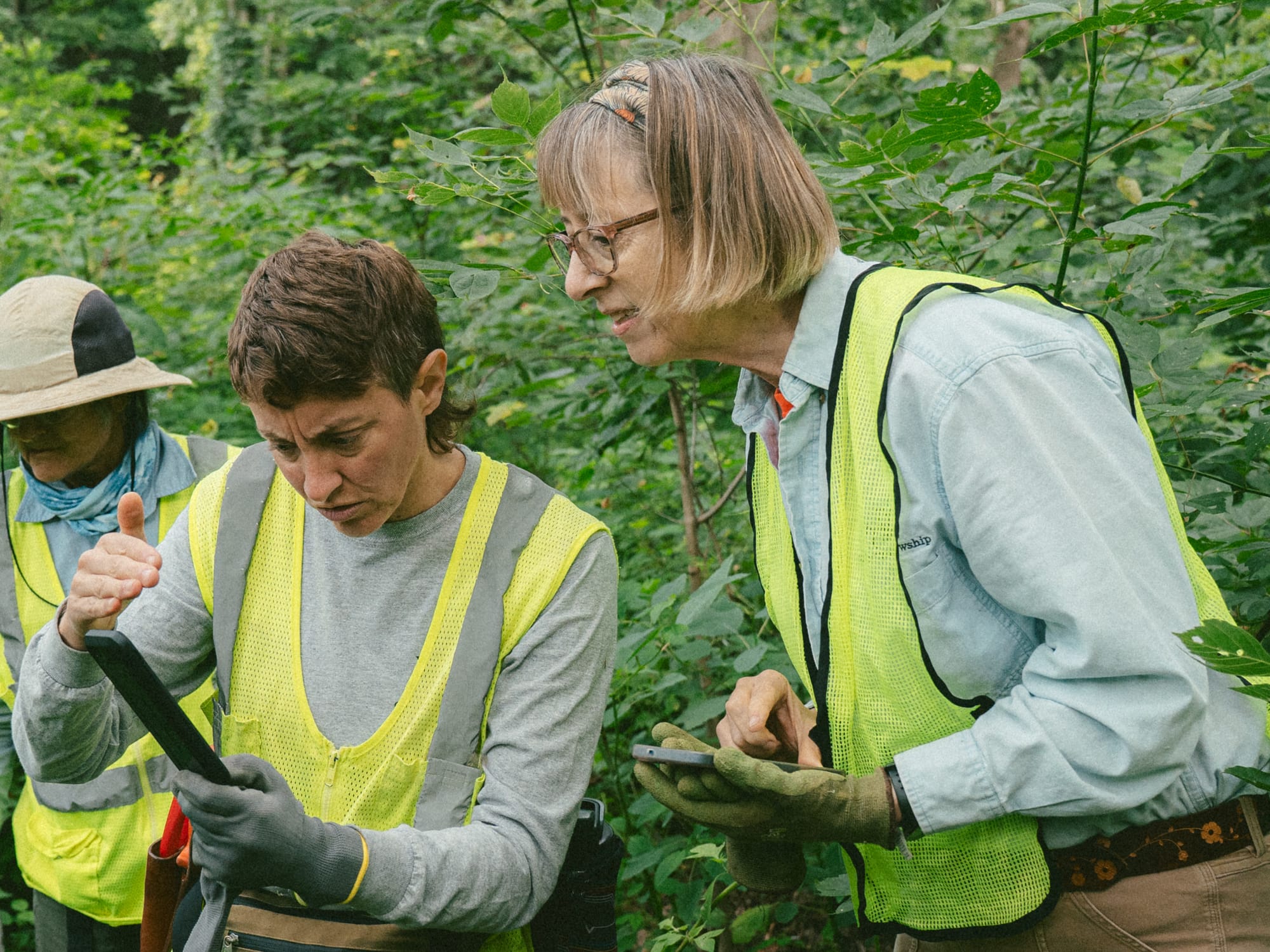
Weed Wrangle at Lower Cascades Park (Aug. 2, 2025)




Comments ()